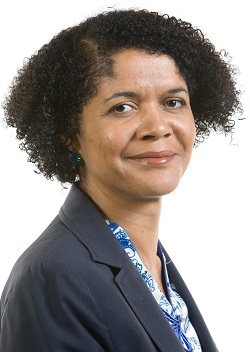Self-professed lifelong feminist Angela Wharrier talks about the gender stereotyping of toys and what she did to fight it. Read on to find out what we can do to help children feel comfortable in pursuing a career free from gender stereotypes.
As a lifelong feminist and sociologist I have always been acutely aware of the socialisation of gender roles by the media and marketing campaigns, which reinforce the notion of a binary gender that assigns traits, behaviours and status to boys and girls as they grow up. This has always been especially true of toy marketing campaigns which have been shown to be particularly damaging to girls. The way children play and the messages they absorb regarding their gender, race, and economic class cannot be underestimated.
Women currently take up an overwhelming majority of roles in the caring, leisure, administrative and secretarial sectors whilst men dominate the managerial and skilled trades. This is evident in the UK Engineering workforce, of which only 9% are female. It is interesting to note the link between the gendering of these trades and the subtle stereotyping of the toys we play with when we’re young.

In 2013, I became incensed when walking around Fenwick’s toy department to see the toys signposted as Boys and Girls. Stereotypically, the active, aggressive, building toys were in the Boys section and the nurturing, housework and craft toys were in the Girls section. I wished to buy my niece some cars but had to look in the Boys section to find them – I wondered how it would make my niece (and any other child for that matter) feel to have to do that. This overt gender stereotyping and subtle integration into kids’ everyday lives via the toys they play with surely has an impact on children’s – girls in particular – choices and opportunities in education and employment.
I wrote to the manager of the toy department and expressed my views, referencing relevant sociological studies and citing the campaign that was influencing toy sellers throughout the UK: PinkStinks. The response, after some back and forth, was that they removed the gendered signs and put up signs simply stating the type of toy. I check each Christmas that the signage remains ungendered and so far, so good. Speaking out about this hopefully goes some way to encourage children to like whatever they fancy and play as they wish to play without worrying about whether they are acting oddly according to socially constructed barriers. I am hoping this will help young girls to be less constricted in their behaviour, feelings and ambitions and to consider all areas of learning so they assume that they can do any job in the world.
Editor’s note: The PinkStinks and Let Toys Be Toys campaigns are incredibly important in raising awareness of gender stereotypes and in fighting for gender equality. Of further interest, particularly related to Angela’s comments about the link between careers and gender roles, is Goldiblox. Fed up with how few females were enrolled on her undergraduate engineering degree, Goldiblox’s founder took matters into her own hands to “disrupt the pink aisle” in toy stores and “introduce girls to the joy of engineering at a young age”. It is perhaps initially sad to say that businesses like these are pioneering in their approach, but on the sunnier side of things, one more option to pique girls’ interest in STEM will never be one too many.





